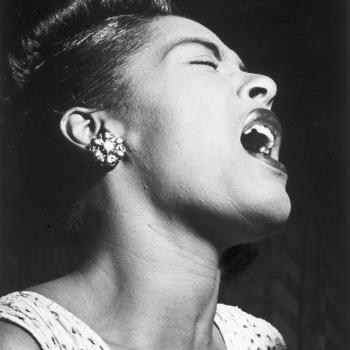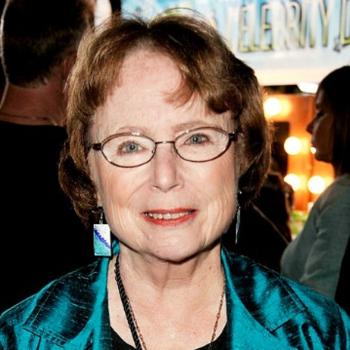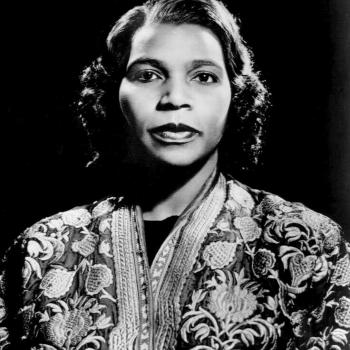
It is a sad irony that the most horrific acts of war often lead to the greatest artistic expression. In 1937, during the Spanish Civil War, the peaceful Basque town of Guernica was used for Nazi bombing practice with the approval of General Francesco Franco. Over 100,000 pounds of munitions were dropped, killing more than 2,000 people and destroying 70% of the city. In response, Pablo Picasso painted his masterpiece Guernica, called modern art's most powerful antiwar statement.
Many students have had little exposure to artwork; and yet paintings, photographs, sculpture, and other art forms can and should be studied as legitimate texts. Since most states now require "visual literacy" as part of their standards, incorporating more artwork into the English classroom certainly is beneficial.
Begin by asking your students what they know about art, art history, or famous artists, such as Picasso. Show students Picasso's Guernica. Ideally, you will want to have a transparency, poster, or projection from the website.
Ask students for their initial impressions of the piece. Provide them with background information, and ask how their impressions change when context is provided. Since the painting is quite large, assign students to look at one quarter of the painting at a time, writing down all the visual details they see and sharing their findings in small groups.
Finally, ask students to write about Picasso's purpose in creating this painting. What did he hope to accomplish and how did he try to do so? The answers to these questions get at the theme of the work. The same questions can be applied to any text-print or visual-students are studying.
This website describes a peace project in which kids from war-torn countries create their own Guernica-styled murals. Pictures of different murals are included.
This website complements a PBS program on Picasso's painting. Included is information about Guernica bombing, the meaning of abstract images in the painting, and Picasso's artistic process.
This site contains a huge collection of resources on Picasso. There are biographies, critiques, and catalogs of his work.
This interactive tool combines the process of drawing with analytical thinking about text. Adapt this tool to your students' exploration of the visual arts.

One of jazz's most influential singers, Billie Holiday was born in 1915 in Philadelphia. "Lady Day," as she was later to be known, sang with such intensity and emotion that she made every song her own, whether she wrote it or not. Unfortunately, the blues she sang of were also her reality–she was a terribly unhappy and insecure person and died prematurely in 1959 due to a life of drug and alcohol abuse.
Holiday's most popular and influential song is probably her 1939 recording of Strange Fruit, a haunting depiction of the lynchings of African Americans that were occurring throughout the Jim Crow American South. The link allows you to read the lyrics and also listen to part of Holiday's rendition of the song. Because of the subject matter and the vividness of the song's images, this activity should be reserved for high school or mature middle school students.
The song is a perfect text to use to teach tone. Before explaining the context of the song, have students read the lyrics or listen to the song and identify the most powerful or descriptive images.
Next, share some facts about the lynchings in the South during this period, such as, "Between 1882 and 1968, 3,446 lynchings of African Americans occurred in the U.S." Ask students to try to determine Holiday's attitude toward this issue, which you can then define as the tone of the song. Have students compare the tone of Holiday's song to that of Langston Hughes' poem on the same topic, Song for a Dark Girl. Then apply the concept of tone to another piece you are currently reading.
This comprehensive site on Billie Holiday includes a biography, photos, quotes, and more.
This page provides links to a variety of artist showcases. Audio and video files are provided along with biographical and historical information.
These pages from the Library of Congress' America's Story site offer information and images. See also the Library's additional Billie Holiday information, on its American Memory pages.
As part of its Independent Lens series, PBS presents the role that protest music has played in American history. The site contains protest music from the days of slavery to the present protests against the war in Iraq.

Lois Duncan is a popular author of young adult mysteries. Duncan received the prestigious Margaret A. Edwards Award, jointly sponsored by the School Library Journal and the Young Adult Library Services Association, for her lifetime contributions to the field of young adult literature.
Share with students some of the mysteries from Ken Weber's Five Minute Mysteries series and test their sleuthing abilities. After students have had a chance to solve a handful of mysteries (the solutions are in the back of the books), ask them to brainstorm the critical attributes of a good mystery. What elements do mysteries share? What do authors need to do to write a compelling mystery for readers?
Once the class has completed this part of the activity, place them in small groups and ask them to compose some short mysteries themselves. They can plan their stories using the interactive Mystery Cube. Groups can then exchange and attempt to solve one another's mysteries. The mysteries from each group can also be compiled and shared with other classes as well.
Duncan's homepage is periodically updated with information about her life, her family, and her books. Teacher Guides, designed by Duncan, are also included for each of her books.
In this interview, Duncan discusses her fiction and nonfiction and her influences.
MysteryNet's Kids Mysteries features mysteries to solve, scary stories, and magic tricks for kids.
This online workshop helps students learn to write original mysteries. Included are writing tips, challenges designed to help students develop skills, and detailed revision guidelines.

Each year the month of April is set aside as National Poetry Month, a time to celebrate poets and their craft. Various events are held throughout the month by the Academy of American Poets and other poetry organizations.
In honor of National Poetry Month, introduce your students to a variety of poetic forms. Assign one or two students each day as "poet of the day" for the month of April. Then provide students with several models for creating different forms of poetry. You might use Theme Poems, Acrostic Poems, Diamante Poems, or other Poetry Types to do this.
Have each student select one form of poetry and write an original poem, which he or she can also illustrate. On their assigned days, have students read their poetry out loud to the class.
This website from the Academy of American Poets includes information on the history of National Poetry Month. Find out what happens during National Poetry Month on the frequently asked questions page.
The Poetry Learning Lab is a great source of knowledge, including a glossary of poetry terms, links to public domain poems, and inspiring essays on poetry from writers and educators.
Scholastic offers this poetry resource for grades 1–8. There are tips from authors of children's poetry, a teacher's guide, step-by-step workshops, and more.
The Favorite Poem Project, cosponsored by Boston College and the Library of Congress, is dedicated to celebrating, documenting, and encouraging poetry's role in Americans' lives. Watch or listen to citizens read poems they love.

Maya Angelou, born Marguerite Johnson, was born in St. Louis, Missouri. Angelou is considered one of the finest poets of her generation. In addition, she authored several books chronicling her youth and adolescence, including I Know Why the Caged Bird Sings.
Read aloud Maya Angelou's poem On the Pulse of Morning, which she read at President Bill Clinton's inauguration in 1993. Ask students what they can infer about the speaker of the poem and her feelings about America.
After the class has had a chance to brainstorm, share with students some biographical information about Angelou. Which events or aspects of her life are reflected in the poem? What pieces of information surprised them and why? Ask students to discuss how one's life and experiences can influence one's writing. Is there evidence of this in students' own writing?
From the National Women's Hall of Fame, this site honors Maya Angelou's achievements. There is a brief biographical sketch and related bibliography.
Biographical and bibliographical information can be found at this website, along with a few of Angelou's poems.
The Academy of Achievement offers a transcript and video clips of an extensive interview with Maya Angelou. The site also offers a biography of Angelou.
On this page from the My Hero Project, three contributors write about why Maya Angelou is important to them.

Hans Christian Andersen is often referred to as the "father of modern fantasy." More than 200 years after his birth, Andersen's tales are still enjoyed by both young and old alike.
Many of Hans Christian Andersen's stories have been adapted and abridged into animated movies. Begin the activity by asking students to write a brief summary of The Little Mermaid, The Nightingale, The Emperor's New Clothes, or another of Andersen's stories. Then read students the original story and ask them to create a Venn diagram that indicates the similarities and differences between the two versions of the tale. Have them use their diagrams to write essays that compare the two versions. Students could also be encouraged to explain which version they prefer and why. Students can also use the Fractured Fairy Tales interactive to write their own alternative versions of several well-known fairy tales.
From the Hans Christian Andersen Center at the University of Southern Denmark, students can link to texts, research material, and information about Andersen's life and works.
On this website, students can access and read 127 different stories by Andersen.
This website celebrates Andersen through the stamps that have been inspired by his work. Included are over 30 of Andersen's stories, accompanied by images of related stamps.
Scholastic invites students to explore fractured fairy tales with author Jon Scieszka. Classroom activities are provided, along with a place for students to publish their own tales and read those of other students.

The RMS Titanic, a British luxury passenger liner, sank en route to New York City, and some 1,500 of its passengers perished. The ship had been designed and built by William Pirrie's firm of Harland & Wolff in Belfast, Ireland. A credulous public had believed that design innovations such as its 15 "watertight" bulkheads would make it "unsinkable."
Your students probably had some background knowledge about the Titanic even before the release of James Cameron's movie starring Leonardo DiCaprio and Kate Winslett. A nice way to begin your study is with the Internet Workshop model. You might use the recommended Websites from this calendar entry as part of the Internet Workshop.
Some questions you might ask students to explore are:
- Could this disaster happen today?
- What could have been done to prevent the disaster at that time?
- What really sank the Titanic?
- Did anything good happen as a result of this disaster?
Visitors to this website learn about Halifax, Nova Scotia's role during the tragedy's aftermath. Included is a transcript of Robert Hunston's wireless document The Titanic Disaster as Viewed from Cape Race.
This exhibit includes hyperlinks to facts about the Titanic and a large collection of historical photographs.
The Anderson Kill & Olick law firm offers this interactive mock trial of the Titanic's operators, the White Star Line.
The BBC's site contains 13 audio recordings of survivors relaying their experiences. The collection also includes six primary source documents.
This site has a collection of fifteen short videos about the Titanic. Included in that collection is an interactive infographic from History.com called "Titanic by the Numbers". The timeline starts with the construction of the Titanic and ends in 1913 with stories from survivors.

Noah Webster is considered by many to be the "father of the American dictionary." He began his work on the project at the age of 43. It took him more than 25 years to complete the first edition. Today Merriam-Webster offers online, CD, and print versions of its Collegiate® Dictionary, currently in its 11th edition with more than 225,000 definitions!
Celebrate the publication of Webster's Dictionary using a variation of the board game Balderdash. Divide students into groups of five or six, and provide each group with a dictionary and some blank paper cut into strips:
- One student scans the dictionary to find a word that he or she believes no one has ever heard before, reads it aloud, and spells it. The other students write down either a real or made-up definition of the word.
- The student with the dictionary writes the real definition and then collects the other definitions. The leader reads all of the definitions and the students in the group then individually choose which of the definitions they believe is real.
- Two points are awarded for selecting the correct definition and one point to each student whose definition is selected. Points are totalled and the next person in the circle selects a new word.
This site is the online version of the Merriam-Webster Dictionary. Students can access the site to look up words and definitions. There is also a Word of the Day to help students build their vocabulary.
This ReadWriteThink interactive allows students to print an alphabet chart or pages for an alphabet book.
At this site, students can search dozens of dictionaries. The resource also provides links to French, German, Italian, and Spanish translation tools.
Word Central, published by Merriam-Webster, offers a kid-friendly student dictionary. Students can also build their own dictionary and take the Daily Buzzword vocabulary challenge.

Marian Anderson planned on singing at Constitution Hall in Washington, DC, which was owned by the Daughters of the American Revolution (DAR). They refused to let her perform because she was African American. Eleanor Roosevelt, outraged by this show of prejudice, arranged for Anderson to sing at the Lincoln Memorial instead.
When Eleanor Roosevelt learned that Marian Anderson had been denied permission to sing at Constitution Hall in Washington, DC, she decided to resign her membership in the Daughters of the American Revolution (DAR). Show your students her resignation letter, along with the letter from Mrs. Henry M. Robert, Jr., president general of the DAR, responding to Roosevelt's resignation (pages one and two). Students may have difficulty reading the handwritten text so, after viewing the original documents, you may want to transcribe them.
Ask your students to write a letter to a newspaper editor explaining their feelings about a present-day social injustice. Invite your students to compose their letters with the Letter Generator.
Read the transcript of this PBS report on Anderson's life, which includes comments by Anderson, her family, and her friends and colleagues.
This resource is from the Annenberg Rare Book and Manuscript Library. The site offers video and audio excerpts of Anderson's concerts and interviews.
These pages from the Library of Congress' America's Story site provide information about Anderson for elementary students.
This DAR press release paid tributeto Marian Anderson's memory and commemorated a pivotal event in the struggle for racial equality.

Gaylord Nelson founded Earth Day in 1970. In the same year, Denis Hayes coordinated the first Earth Day in the United States. As a result of Earth Day, many environmental laws were passed and the Environmental Protection Agency was created.
In celebration of Earth Day, have your students research some environmentalists who have made major contributions to our planet. A good starting point would be to view the people listed on the Ecology Hall of Fame. Have each student choose one person.
After researching the person's achievements, students can then write letters to the environmentalists asking for their opinions on a current environmental issue or to share ideas on how to protect the earth. Students can write a friendly or business letter using the Letter Generator. After printing the letters, have students turn their letters into letter poems using the Letter Poem Creator, which will help them change their letters into poetic form.
Once the poems are finished, host an Earth Day poetry reading-outdoors if possible.
Find tips for green living.
The EEK! website is filled with environment-related information and activities for students in grades 4–8. Teachers can find lesson plans and related links.
The Earth Foundation offers this collection of resources. Of interest is the Teacher/Student resources section, which has sample lesson plans, links to information on the history of Earth Day and the rainforest, and letter-writing campaigns for students.
This site, from the United States Environmental Protection Agency, provides information about a variety of environmental topics-from air and water to garbage and recycling.